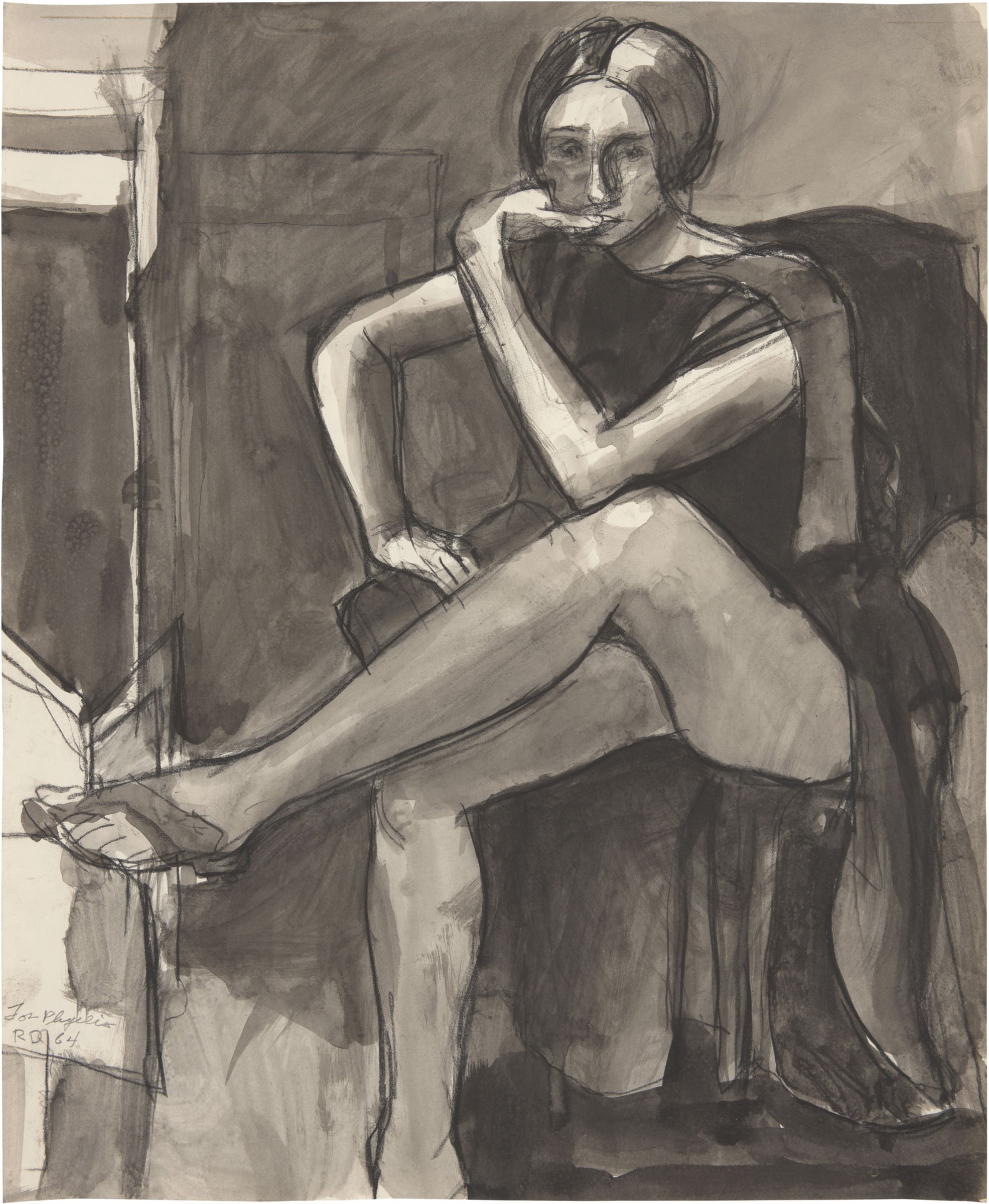The View From the Other Side
This beautiful and powerful drawing will be on view at the Richmond Art Center in the exhibition, Closely Considered : Diebenkorn in Berkeley. It is done in ink and charcoal on paper and dates from 1964. copyright Richard Diebenkorn Foundation, all rights reserved
It is always an awakening to take on someone’s job. We come to appreciate the labor which goes unrecorded. We come to appreciate the various considerations with which they approach their decisions.
When an artist takes on the role of curator, which artists have done at many different points in time, the artist does not conceal the trained eye, yet often must suspend judgment and prejudice. This may appear as the realm of conflict. It certainly is territory which is now being charted as more and more artists are curating, and without qualms, including their own work in these exhibitions. Often this is a by-product of the alternative exhibition environment: artist as organizer, promoter, and historian. And, not to forget, fundraiser.
A different set of issues comes to the fore when an artist sets out to establish or spotlight historical connections. Then the anticipation is that an understanding of impulse, intimacy with process, and sympathy with choice will illuminate the art with an insight wrought by the artist’s experience in the studio.
What is perhaps commonly understood, but perhaps not openly conceded, is the intense pleasure of the handling of art. The first time one opens a drawer of Goya prints, walks into a museum vault and picks up a Gauguin, or has an unframed Ensor etching in hand, one is marked. One is changed and utterly transfixed by the enormity of the art. To hold a little Cezanne pencil self- portrait in ones hands is to experience a connection which can sustain faith. This is fundamentally different from walking through a museum with a crowd on a timed ticket passing in front of a painting in twenty seconds.
This is one aspect of the drive to curate: to put together a group of artworks of extraordinary quality, in a visual unfolding of line, and space, and light, and to provide the opportunity to reflect, to come to a deeper understanding of the interests, pursuits, and considerations of the artwork.
Hopefully the visitor to the exhibition, Closely Considered – Diebenkorn in Berkeley being mounted at the Richmond Art Center in September, will move through the gallery in response to the rhythms of the drawings — languid lines, jutting forms, circling back brushstrokes, patterns pulsating across the surface. The mastery of space has captivated artists for the decades, the beauty and luminescence have held collector enraptured. This exhibition is an occasion to consider Diebenkorn’s work closely and quietly, without any measure but the internal pulse to limit the visual dialogue.
